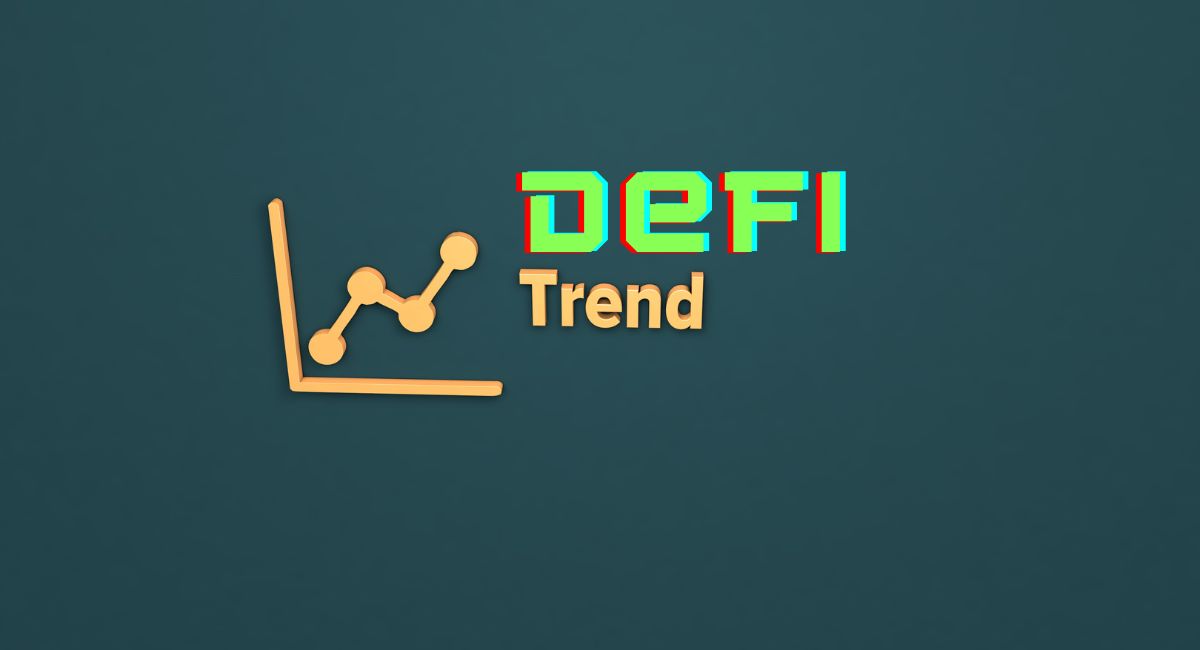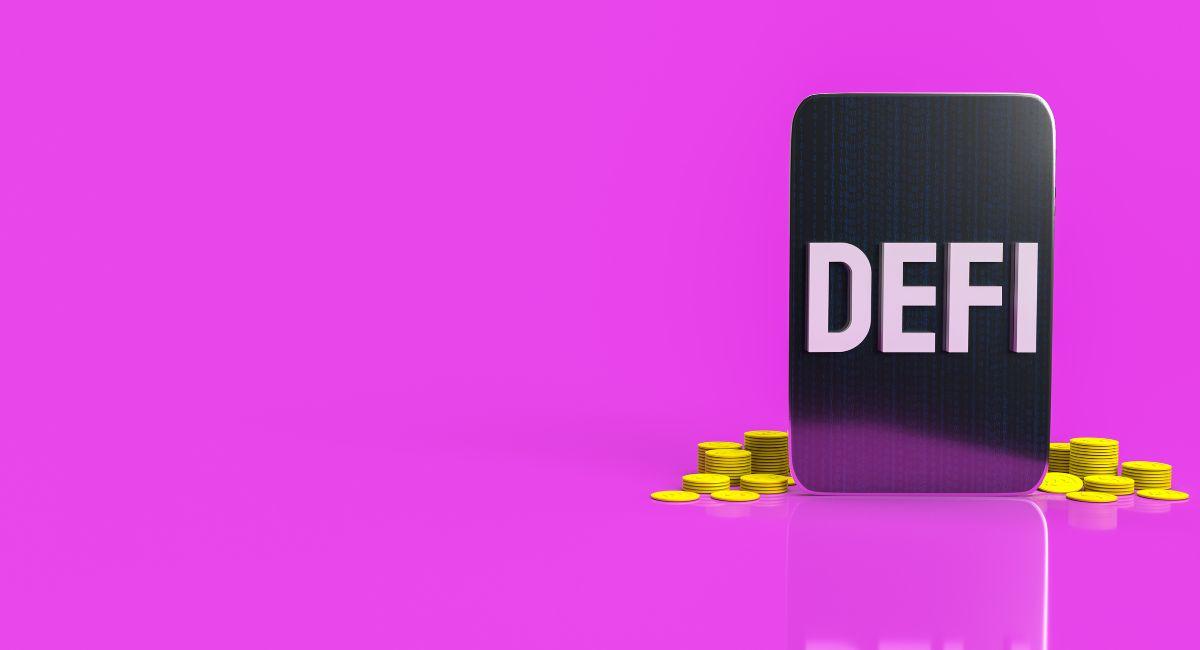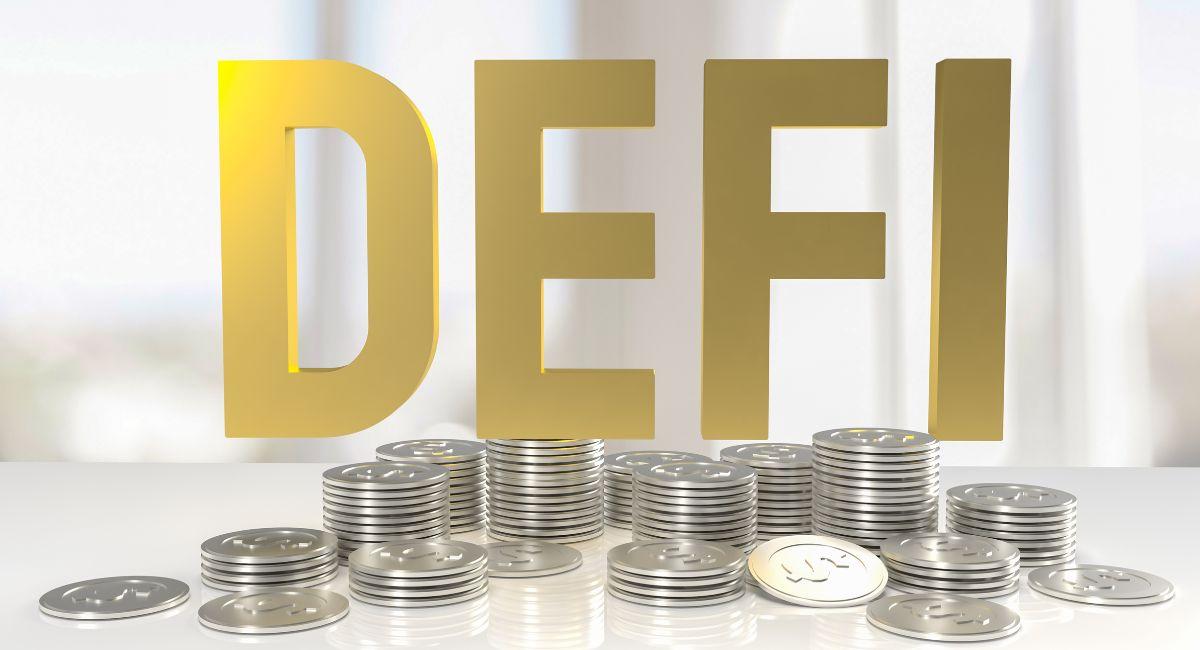January 8, 2024 by Diana Ambolis
5812
The decentralized finance (DeFi) space is undergoing a transformative phase, with 2024 poised to be a pivotal year. As we venture into the new year, several trends are set to redefine the DeFi landscape, offering exciting opportunities and challenges. From the integration of traditional finance to the rise of innovative technologies, let’s delve into the
The decentralized finance (DeFi) space is undergoing a transformative phase, with 2024 poised to be a pivotal year. As we venture into the new year, several trends are set to redefine the DeFi landscape, offering exciting opportunities and challenges. From the integration of traditional finance to the rise of innovative technologies, let’s delve into the top 10 DeFi trends that will shape the financial ecosystem in 2024.
Top 10 DeFi trends to look out for:

- Crypto Bridges: Navigating the Multi-Chain Terrain
- Crypto bridges have emerged as crucial connectors within the blockchain realm. These bridges facilitate seamless transitions of assets to faster layer 2 networks like Arbitrum and Polygon, enabling cost-effective ERC-20 token trading while maintaining exposure to Ethereum. The integration of bridges into DeFi trends protocols simplifies token swaps across various blockchains, contributing to enhanced user experiences and expanded market access.
- Traditional Finance Integration: Bridging the Gap
- The convergence of DeFi and traditional financial systems is gaining momentum. Traditional institutions are progressively incorporating DeFi protocols into their operations, signaling a shift toward universal accessibility to financial services with improved efficiency and inclusivity.
- Blockchain Gaming: A Web3 Gaming Revolution
- The global blockchain gaming market is set for explosive growth, with predictions of reaching USD 614 billion within seven years. Anticipated launches of blockchain games and the increasing buzz around the crypto market are expected to attract millions of gamers to Web3 by 2024. This marks a crucial year for Web3 adoption, reshaping the gaming industry through decentralized and blockchain-based technologies.
- DEX and AMM Innovations: Reshaping Financial Markets
- Decentralized Exchanges (DEXes) and Automated Market Makers (AMMs) continue to play a pivotal role in reshaping financial markets. Their significance lies in their ability to adapt and innovate, addressing limitations and optimizing liquidity. As they transition to more conventional order book structures, DEXes and AMMs aim to democratize financial services, fostering a more inclusive and efficient global financial ecosystem.
- Governance Tokens: Shaping Decentralized Protocols
- 2024 is poised to be the year of governance tokens. These tokens are gaining unprecedented interest and investment as institutions recognize their pivotal role in shaping decentralized protocols and platforms. The influence of governance tokens in decision-making processes within the DeFi ecosystem is set to grow significantly.
- Central Bank Digital Currencies (CBDCs): Integrating the Traditional and Digital
- Central banks globally are actively exploring and piloting Central Bank Digital Currencies (CBDCs). The integration of CBDCs into traditional financial infrastructures represents a paradigm shift, extending beyond facilitating cross-border transactions to innovative applications across various sectors.
- Decentralized Physical Infrastructure Networks (DePIN): A Blockchain Revolution
- DePIN, or Decentralized Physical Infrastructure Network, leverages blockchain technology to revolutionize physical infrastructure management. Using tokens to incentivize decentralized infrastructure development, DePIN empowers users and businesses to own and monetize globally distributed physical infrastructure networks, marking a disruptive trend for 2024.
- Restaking Protocols: Enhancing Yield Farming
- Restaking, the process of locking up liquid staking tokens for extra yield, is expected to gain traction in 2024. This trend simplifies the yield farming process and enhances the utility of staking ecosystems, attracting more interest and engagement with additional incentives for token holders.
- Stablecoin Innovation: Navigating Market Volatility
- In 2024, stablecoins will continue to play a crucial role in navigating market volatility. Established stablecoins like USDC and USDT are expected to maintain dominance due to their interoperability and trusted status. New stablecoin projects will differentiate themselves by exploring alternative collateral, offering user incentives, and implementing innovative compliance frameworks.
- Security and Regulation: Safeguarding DeFi Ecosystem
- With the growing prominence of DeFi, security, and regulatory considerations become paramount. In 2024, a focus on enhancing security measures and navigating evolving regulations will be critical for sustaining the growth and adoption of DeFi.
What is trending in DeFi?
Decentralized Finance, or
DeFi trends, continues to be at the forefront of transformative developments within the broader cryptocurrency and blockchain space. As of 2024, several trends are shaping the landscape of DeFi, indicating its evolution beyond a niche sector into a mainstream financial ecosystem. Let’s delve into the vast details of what is currently trending in DeFi.
- Crypto Bridges: Enhancing Interoperability
- Crypto bridges are gaining prominence as essential infrastructures within the DeFi space. These bridges act as connectors between different blockchain networks, facilitating the seamless transfer of assets. They play a crucial role in enhancing interoperability by allowing users to transition assets to faster and more cost-effective layer 2 networks. This trend not only improves transaction efficiency but also opens up access to exclusive markets on different blockchains.
- Traditional Finance Integration: Bridging the Old and the New
- One of the most significant trends is the integration of traditional finance with DeFi trends protocols. Traditional financial institutions are recognizing the potential of decentralized technologies and are progressively incorporating DeFi into their operations. This integration is not only bringing legitimacy to the space but also signaling a broader shift towards universal accessibility to financial services. As DeFi becomes more intertwined with traditional finance, it paves the way for a seamless coexistence of old and new financial systems.
- Blockchain Gaming: Gaming on the Blockchain
- The intersection of blockchain and gaming is a trend gaining substantial momentum. Blockchain gaming, often referred to as Web3 gaming, introduces decentralized principles into the gaming industry. With the potential for true ownership of in-game assets, interoperability between games, and innovative token-based incentives, blockchain gaming is reshaping how we perceive and engage with digital entertainment. The buzz around blockchain games and the broader crypto market is attracting millions of gamers into the Web3 space.
- DEX and AMM Innovations: Shaping the Future of Trading
- Decentralized Exchanges (DEXes) and Automated Market Makers (AMMs) continue to innovate, reshaping traditional financial markets. These platforms provide users with unprecedented autonomy, security, and access to a diverse range of assets. The ongoing trend in DEX and AMM development involves transitioning from AMM models to more conventional order book structures. This shift aims to optimize liquidity, improve trading efficiency, and cater to the diverse needs of users.
- Governance Tokens: Empowering Community Decision-Making
- Governance tokens have become pivotal in shaping the direction of decentralized protocols. These tokens empower community members to participate actively in decision-making processes, ranging from protocol upgrades to the allocation of resources. The trend in 2024 suggests an unprecedented surge in interest and investment in governance tokens as institutions recognize their role in shaping the decentralized landscape.
- Central Bank Digital Currencies (CBDCs): Bridging Digital and Traditional Finance
- Central banks globally are exploring the development and integration of Central Bank Digital Currencies (CBDCs). This trend extends beyond the DeFi space, indicating a broader shift in the financial landscape. CBDCs aim to provide digital versions of national currencies, offering benefits such as increased efficiency in cross-border transactions and innovative applications beyond retail payments.
- Decentralized Physical Infrastructure Networks (DePIN): Revolutionizing Infrastructure
- DePIN represents a novel approach to leveraging blockchain technology for managing and operating physical infrastructure in a decentralized manner. This trend involves using tokens to incentivize infrastructure development, empowering users and businesses to own and monetize globally distributed physical assets. DePIN is emerging as the next phase of the Internet of Things (IoT) within the Web3 ecosystem.
- Restaking Protocols: Enhancing Yield Farming
- Restaking protocols involve the process of locking up liquid staking tokens for additional yield. This trend is gaining traction due to its simplified yield farming process and enhanced utility within staking ecosystems. As Ethereum transitions from proof-of-work to proof-of-stake, restaking introduces a new layer of utility, attracting increased interest and engagement from token holders.
- Stablecoin Innovation: Navigating Market Volatility
- Stablecoins continue to be a crucial component of the DeFi ecosystem, providing stability amid market volatility. Established stablecoins like USDC and USDT maintain dominance due to their broad interoperability, network effects, and trusted status. However, the trend in 2024 involves the emergence of new stablecoin projects exploring alternative collateral, innovative compliance frameworks, and unique user incentives.
- Security and Regulation: Safeguarding the Ecosystem
- With the increasing prominence of DeFi, the focus on security measures and regulatory compliance has intensified. This trend emphasizes the importance of safeguarding the integrity of the DeFi trends ecosystem. Enhanced security protocols, audits, and adherence to evolving regulatory frameworks are critical factors for sustaining the growth and adoption of decentralized finance.
The DeFi trends for 2024 depict a landscape that is vibrant, dynamic, and evolving. The integration of traditional finance, the rise of blockchain gaming, innovations in decentralized trading, and the exploration of new frontiers such as DePIN and CBDCs collectively contribute to the ongoing narrative of decentralized finance. As the DeFi trends ecosystem continues to mature, it not only presents new opportunities for financial innovation but also challenges that require careful navigation and collaboration within the broader financial ecosystem.
What is the next generation of DeFi?

The next generation of decentralized finance (DeFi) trends is characterized by a profound evolution in technology, functionality, and user experience. As we look ahead, several key trends and innovations are shaping the landscape, transforming DeFi trends into a more sophisticated and inclusive financial ecosystem. Let’s explore in vast detail what the next generation of DeFi holds.
- Cross-Chain DeFi Platforms: Breaking Silos
- A significant leap forward in the next generation of DeFi is the development of cross-chain platforms. These platforms aim to break down blockchain silos, allowing assets to move seamlessly across different blockchains. This interoperability not only enhances liquidity but also expands the scope of decentralized finance, enabling users to access a more diverse range of assets and protocols.
- Decentralized Autonomous Organizations (DAOs): Community Governance at its Core
- DAOs are emerging as the cornerstone of the next-generation DeFi trends landscape. These decentralized entities, governed by smart contracts and community votes, empower users to actively participate in decision-making processes. DAOs extend beyond governance tokens, enabling a more comprehensive and community-driven approach to managing and evolving DeFi protocols.
- Layer 2 Scaling Solutions: Improving Scalability and Efficiency
- Scalability has been a persistent challenge in the DeFi space. The next generation is witnessing the widespread adoption of Layer 2 scaling solutions. These solutions, such as Optimistic Rollups and zk-Rollups, aim to alleviate congestion on the main Ethereum network, providing faster transaction speeds and significantly reducing gas fees. This scalability enhancement enhances the overall efficiency and user experience within DeFi platforms.
- Decentralized Identity and Reputation Systems: Fostering Trust
- To address the issue of trust within decentralized ecosystems, the next generation of DeFi trends is exploring decentralized identity and reputation systems. By leveraging blockchain technology, users can establish and manage their digital identities in a secure and verifiable manner. Reputation systems add an additional layer, allowing users to build trust based on their interactions within the DeFi space.
- Decentralized Oracles: Ensuring Reliable Data Feeds
- The reliance on external data is a critical aspect of many DeFi applications. The next generation is witnessing the integration of decentralized oracles to ensure the reliability and security of data feeds. These oracles source information from multiple, decentralized providers, reducing the risk of manipulation and providing a more robust foundation for smart contract execution.
- Flash Loans and Complex Financial Instruments: Advancing Financial Innovation
- Flash loans, which allow users to borrow and repay funds within a single transaction, represent a leap in financial innovation within the next generation of DeFi. Additionally, the development of more complex financial instruments, such as options and derivatives, is expanding the toolkit available to DeFi users. These instruments enable sophisticated trading strategies and risk management within decentralized platforms.
- Privacy-Preserving Technologies: Enhancing Security
- Privacy concerns have prompted the integration of privacy-preserving technologies in the next generation of DeFi. Zero-knowledge proofs, zk-SNARKs, and other privacy-focused solutions are being employed to safeguard sensitive user information while maintaining transparency within decentralized applications. This trend addresses one of the key challenges of privacy in open and transparent blockchain networks.
- Decentralized Insurance: Mitigating Risks
- As the DeFi ecosystem matures, the importance of risk mitigation becomes paramount. The next generation is witnessing the rise of decentralized insurance protocols. These platforms use blockchain technology to create transparent and automated insurance policies, providing users with protection against smart contract vulnerabilities, platform failures, and other risks inherent in decentralized finance.
- Tokenization of Real-World Assets: Bridging Traditional and Digital Finance
- Tokenization of real-world assets, such as real estate, art, and commodities, is becoming a prominent trend in the next generation of DeFi. By representing physical assets as digital tokens on the blockchain, these platforms bridge the gap between traditional and digital finance, enabling fractional ownership, liquidity, and accessibility to a broader range of investors.
- Decentralized Finance on Layer 1 Blockchains: Diverse Ecosystems
- While Layer 2 scaling solutions on Ethereum are prevalent, the next generation of DeFi trends also explores decentralized finance on Layer 1 blockchains. Platforms built on blockchain networks like Binance Smart Chain, Solana, and Polkadot are gaining traction, offering diverse ecosystems with unique features, lower transaction fees, and increased throughput.
The next generation of DeFi trends represents a transformative phase in the evolution of decentralized finance. The integration of cross-chain functionality, DAO governance, improved scalability, enhanced privacy, and innovative financial instruments collectively contribute to a more sophisticated and inclusive financial ecosystem. As DeFi trends continue to push the boundaries of financial innovation, the next generation promises increased accessibility, efficiency, and security, laying the groundwork for a decentralized financial landscape that can cater to a broader global audience.
Also, read- Top 3 DeFi Milestones Of 2023 That Will Change The Trajectory Of The Future
Conclusion:
The year 2024 is poised to be a landmark period for decentralized finance (DeFi), witnessing a confluence of technological innovations, mainstream integration, and transformative shifts in the financial landscape. The top 10 trends outlined above collectively paint a vivid picture of the evolving DeFi ecosystem, reflecting not only its resilience but also its adaptability to changing market dynamics.
Crypto bridges are acting as vital conduits, enabling seamless asset transitions across various blockchain networks. This fosters a more interconnected and accessible DeFi environment, paving the way for a more efficient and user-friendly experience. Simultaneously, the integration of traditional finance into the DeFi space marks a significant stride towards bridging the gap between conventional financial systems and the decentralized future, unlocking universal access to financial services.
The explosive trajectory of blockchain gaming, coupled with projections indicating a substantial increase in Web3 adoption, highlights the transformative power of decentralized technologies beyond the financial sector. This intersection of gaming and blockchain is not only reshaping entertainment but also contributing to the broader adoption of decentralized ecosystems.
Decentralized exchanges (DEXes) and automated market makers (AMMs) continue to redefine financial markets by offering unparalleled autonomy, security, and accessibility to diverse assets. As these platforms evolve and transition to more conventional structures, they are poised to democratize financial services, fostering inclusivity and efficiency on a global scale.
The surge in interest and investment surrounding governance tokens signifies a growing recognition of their pivotal role in shaping decentralized protocols. These tokens are becoming key decision-making tools, empowering communities to actively participate in the governance and evolution of DeFi platforms.
The exploration and piloting of Central Bank Digital Currencies (CBDCs) by central banks globally mark a substantial shift towards integrating digital currencies into traditional financial infrastructures. This not only facilitates cross-border transactions but also sets the stage for innovative applications and transformative advancements across multiple sectors.
The advent of Decentralized Physical Infrastructure Networks (DePIN) introduces a novel approach to infrastructure management, leveraging blockchain to create, manage, and operate physical assets in a decentralized manner. This disruptive trend has the potential to revolutionize how physical infrastructure is owned, incentivizing global participation.
Restaking protocols, by locking up liquid staking tokens for extra yield, are simplifying the yield farming process and enhancing the functionality of staking ecosystems. This trend, coupled with the shift from proof-of-work to proof-of-stake, adds a new layer of utility and engagement for token holders.
Stablecoins, with their focus on stability amid market volatility, are expected to diversify in 2024. Established stablecoins will maintain dominance, while new projects exploring alternative collateral and innovative compliance frameworks aim to offer unique value propositions and user incentives.
As the DeFi landscape continues to evolve, security and regulatory considerations become paramount. Safeguarding the ecosystem’s integrity through robust security measures and navigating regulatory frameworks are imperative for sustained growth and broader adoption.
In essence, the trends shaping the DeFi landscape in 2024 depict a dynamic and multifaceted ecosystem that is pushing the boundaries of financial innovation. Stakeholders, from developers and investors to end-users and regulatory bodies, must stay attuned to these developments, fostering collaboration and adaptability to ensure the continued evolution and success of decentralized finance in the years to come. The journey into 2024 promises not only technological advancements but also a reshaping of the financial narrative on a global scale.






























































